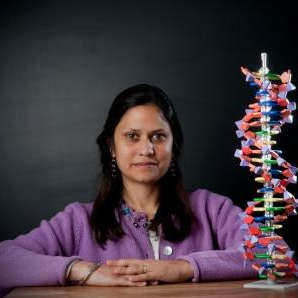Nucleic Acid Dynamics and Structure
A special issue of Genes (ISSN 2073-4425). This special issue belongs to the section "Molecular Genetics and Genomics".
Deadline for manuscript submissions: closed (1 December 2018) | Viewed by 3838
Special Issue Editor
Interests: DNA structure; DNA dynamics; fluorescence spectroscopy; FRET; molecular dynamics simulations; thermodynamcis; protein-DNA interactions; DNA repair
Special Issue Information
Dear Colleagues,
Recognition of nucleic acid substrates by proteins is often governed by their relative stability and local dynamics. In addition, many nucleic acid substrates, particularly RNA-based ones adopt complex structures the stability of which are often governed by function and mediated by ligand binding. For example, RNA riboswitches in the presence of one ligand will adopt one structure, while adopting a non-functional form in the absence of ligand. In a given ensemble, highly sampled states are often associated with binding interactions; although conformational capture of a rarely sampled state by binding of protein or a ligand can be another mechanism for forming a functional state. This volume will explore relationships wherein the dynamics of the nucleic acid is an important element of adopting a functional conformation. In this Special Issue, we welcome submissions of original articles as well as reviews of any topics that consider conformational dynamics and thermodynamics related to protein and ligand binding, aptamer selection, allostery and overall function for a better understanding of nucleic acid structure and dynamics including new perspectives and interpretations as well as novel technological and theoretical findings.
Prof. Dr. Ishita Mukerji
Guest Editor
Manuscript Submission Information
Manuscripts should be submitted online at www.mdpi.com by registering and logging in to this website. Once you are registered, click here to go to the submission form. Manuscripts can be submitted until the deadline. All submissions that pass pre-check are peer-reviewed. Accepted papers will be published continuously in the journal (as soon as accepted) and will be listed together on the special issue website. Research articles, review articles as well as short communications are invited. For planned papers, a title and short abstract (about 100 words) can be sent to the Editorial Office for announcement on this website.
Submitted manuscripts should not have been published previously, nor be under consideration for publication elsewhere (except conference proceedings papers). All manuscripts are thoroughly refereed through a single-blind peer-review process. A guide for authors and other relevant information for submission of manuscripts is available on the Instructions for Authors page. Genes is an international peer-reviewed open access monthly journal published by MDPI.
Please visit the Instructions for Authors page before submitting a manuscript. The Article Processing Charge (APC) for publication in this open access journal is 2600 CHF (Swiss Francs). Submitted papers should be well formatted and use good English. Authors may use MDPI's English editing service prior to publication or during author revisions.
Keywords
- Structure
- dynamics
- allostery
- structure-function
- specificity and recognition
- protein-induced bending
- conformational dynamic
- induced fit






